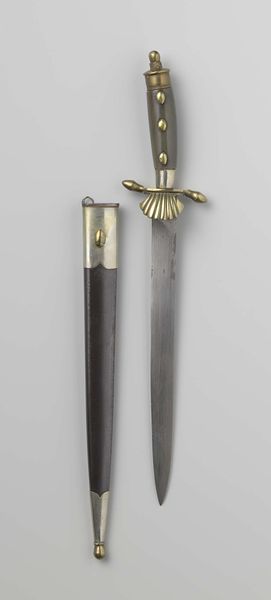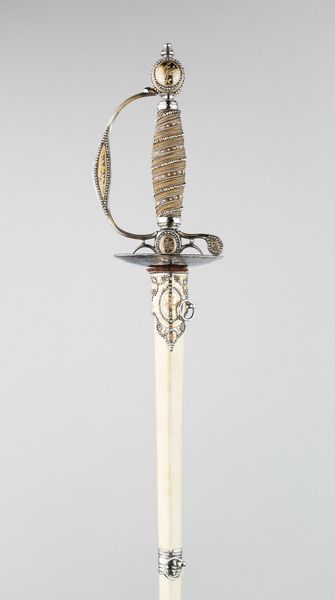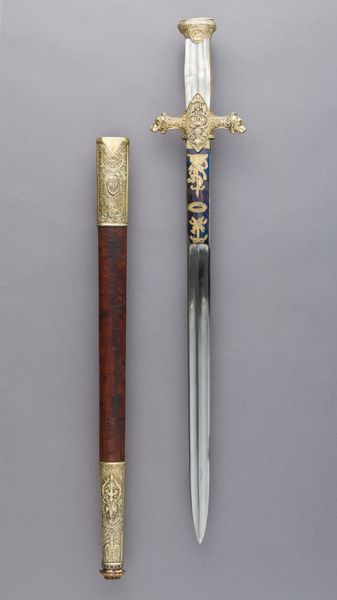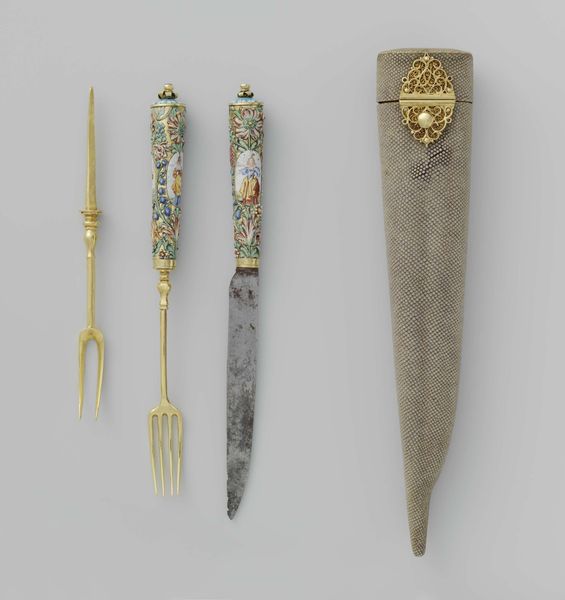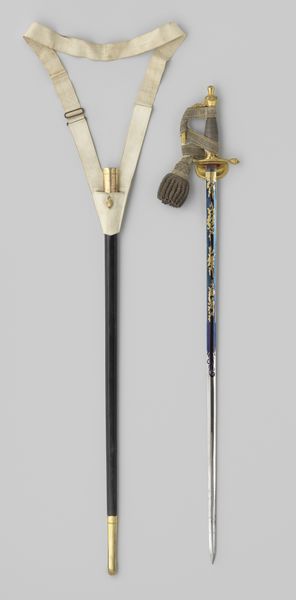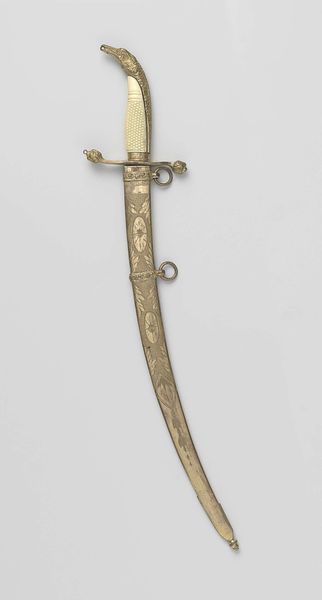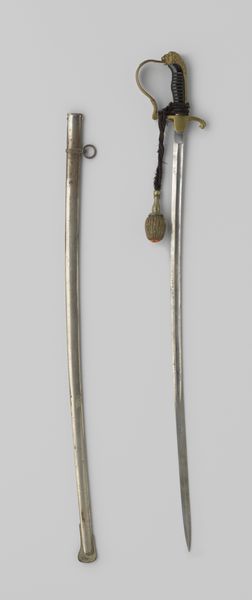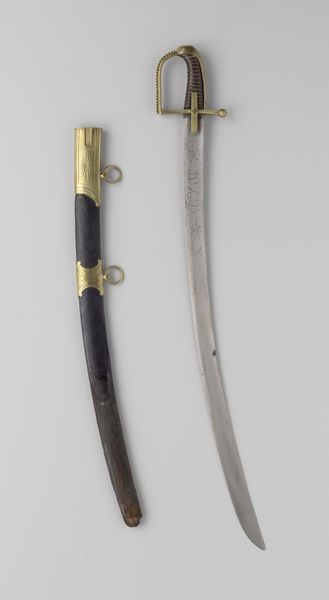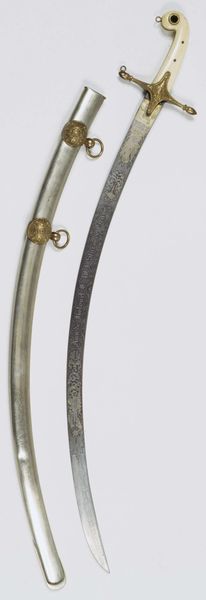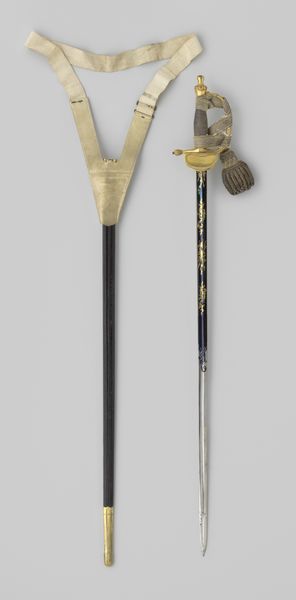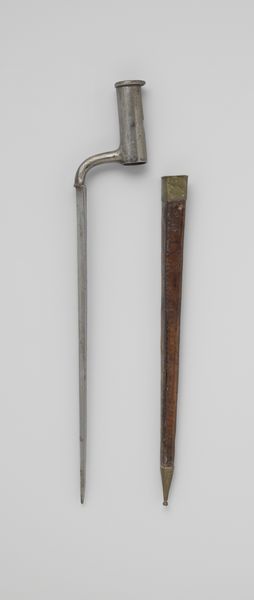
metal, sculpture, wood, ivory
#
metal
#
sculpture
#
asian-art
#
sculpture
#
wood
#
islamic-art
#
ivory
Dimensions: length 52.0 cm, width 12.0 cm, depth 4.3 cm, length 50.3 cm, width 7.5 cm, depth 4.5 cm, length 49 cm
Copyright: Rijks Museum: Open Domain
This is a Kris, or keris, a distinctive, asymmetrical dagger originating from Indonesia. It is presented here with its sheath. Consider the sinuous, serpentine blade. The undulating form is no mere aesthetic choice; it embodies 'naga', the mythical serpent-dragon, a potent symbol of power, protection, and virility across Southeast Asian cultures. The ‘naga’ is a primordial life force, a motif that slithers through time, appearing in ancient Hindu and Buddhist art as a guardian spirit. The handle, often depicting deities or ancestral figures, acts as a conduit, channeling spiritual energy into the wielder. What is fascinating is that in some cultures the number of curves on the Kris is a symbolic representation of the owner's status and power. Such objects served as potent symbols of identity, connecting individuals to a complex web of cultural narratives, beliefs, and ancestral spirits. These symbols persist, evolving, adapting, and reappearing across time and space, continually reshaped by the currents of history and human imagination.
Comments
rijksmuseum about 2 years ago
⋮
This kris was presented to King William I by the Sultan of Madura, Cakra Adinigrat VIII, in 1835. In an accompanying letter, the sultan expressed a thousand thanks for his appointment as a Commander in the Order of the Dutch Lion. His gift to the king was a kris ‘made at my kraton [= palace]’. Two of the 117 diamonds decorating the scabbard are missing.
Join the conversation
Join millions of artists and users on Artera today and experience the ultimate creative platform.
